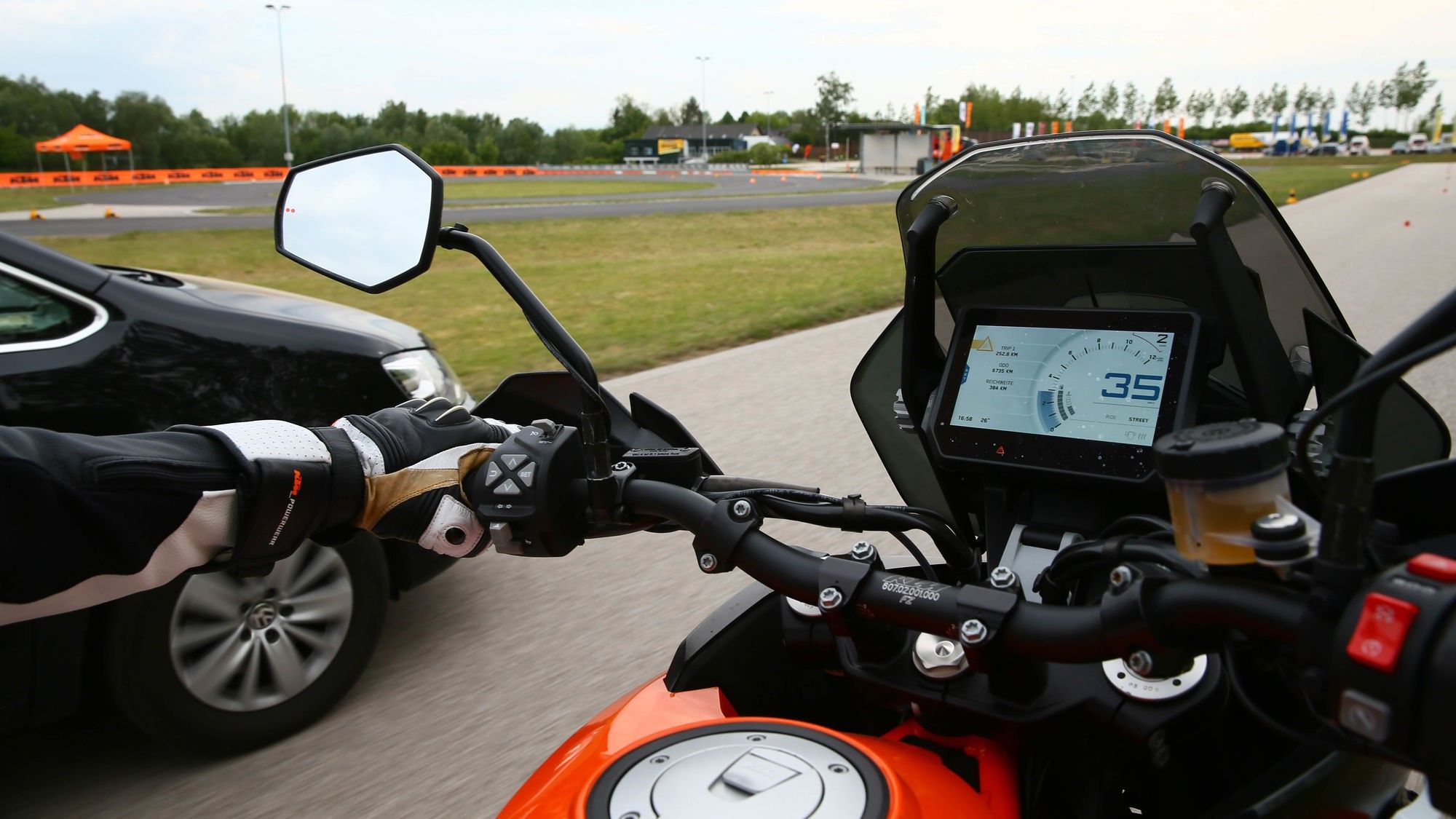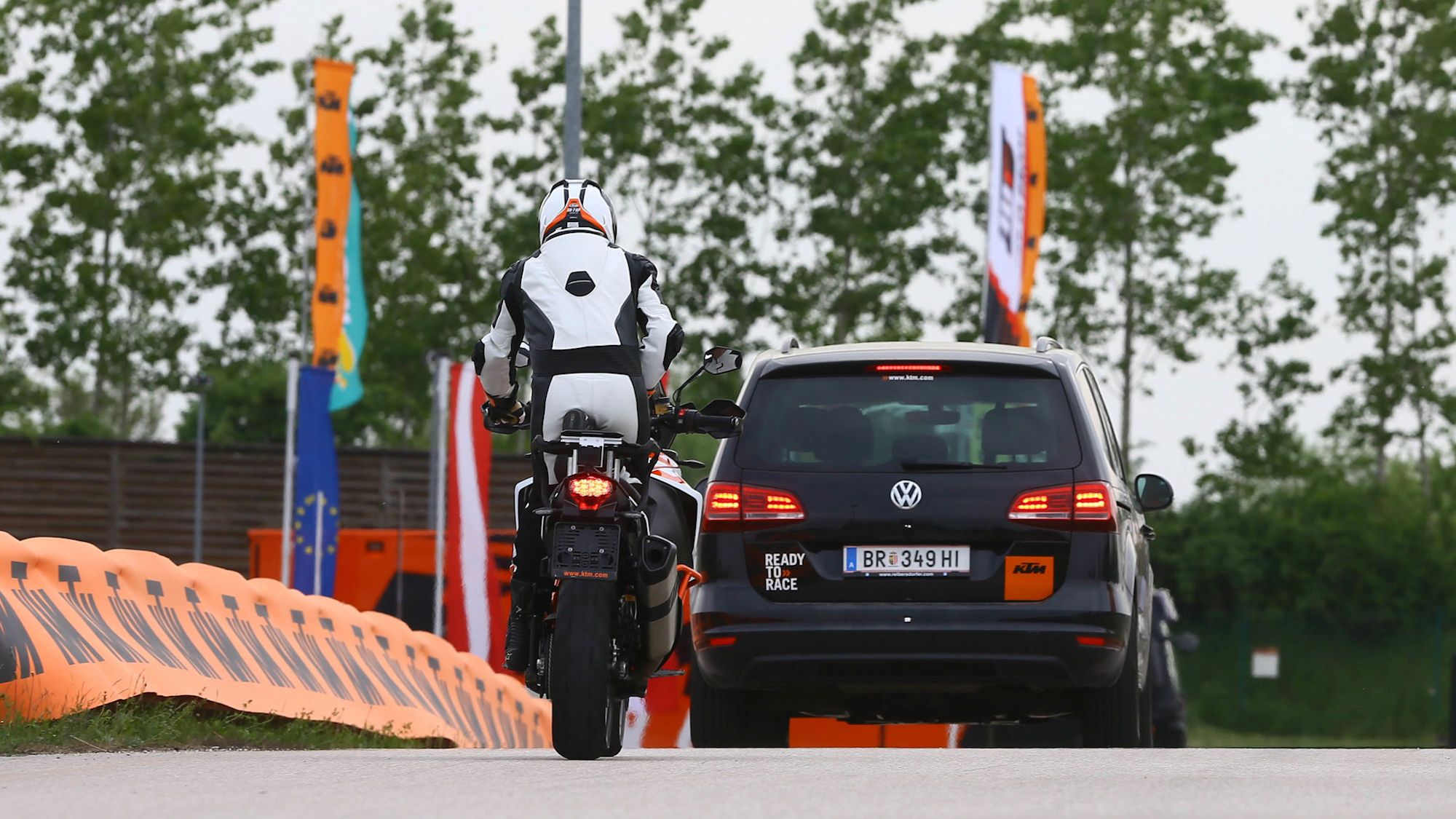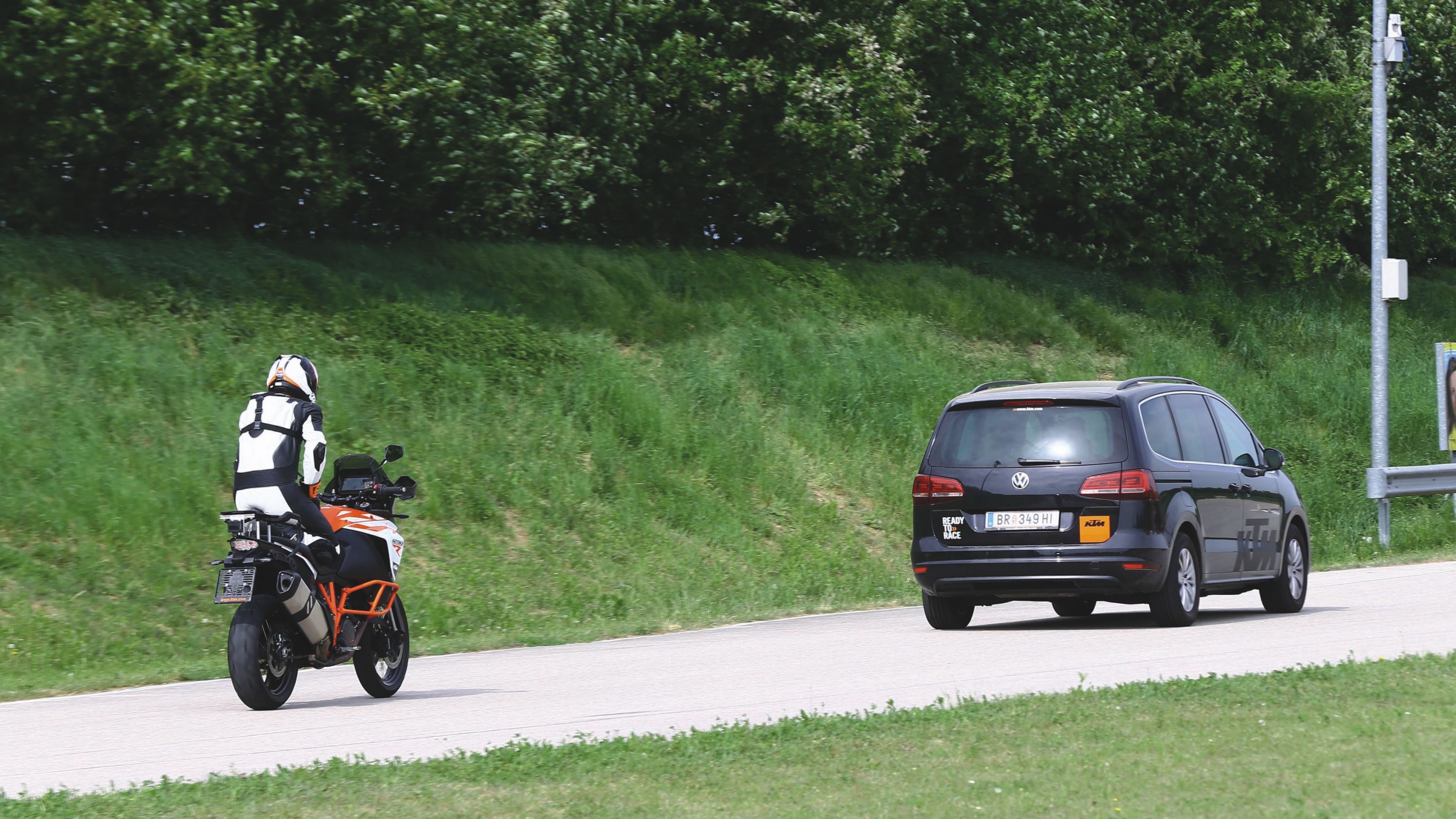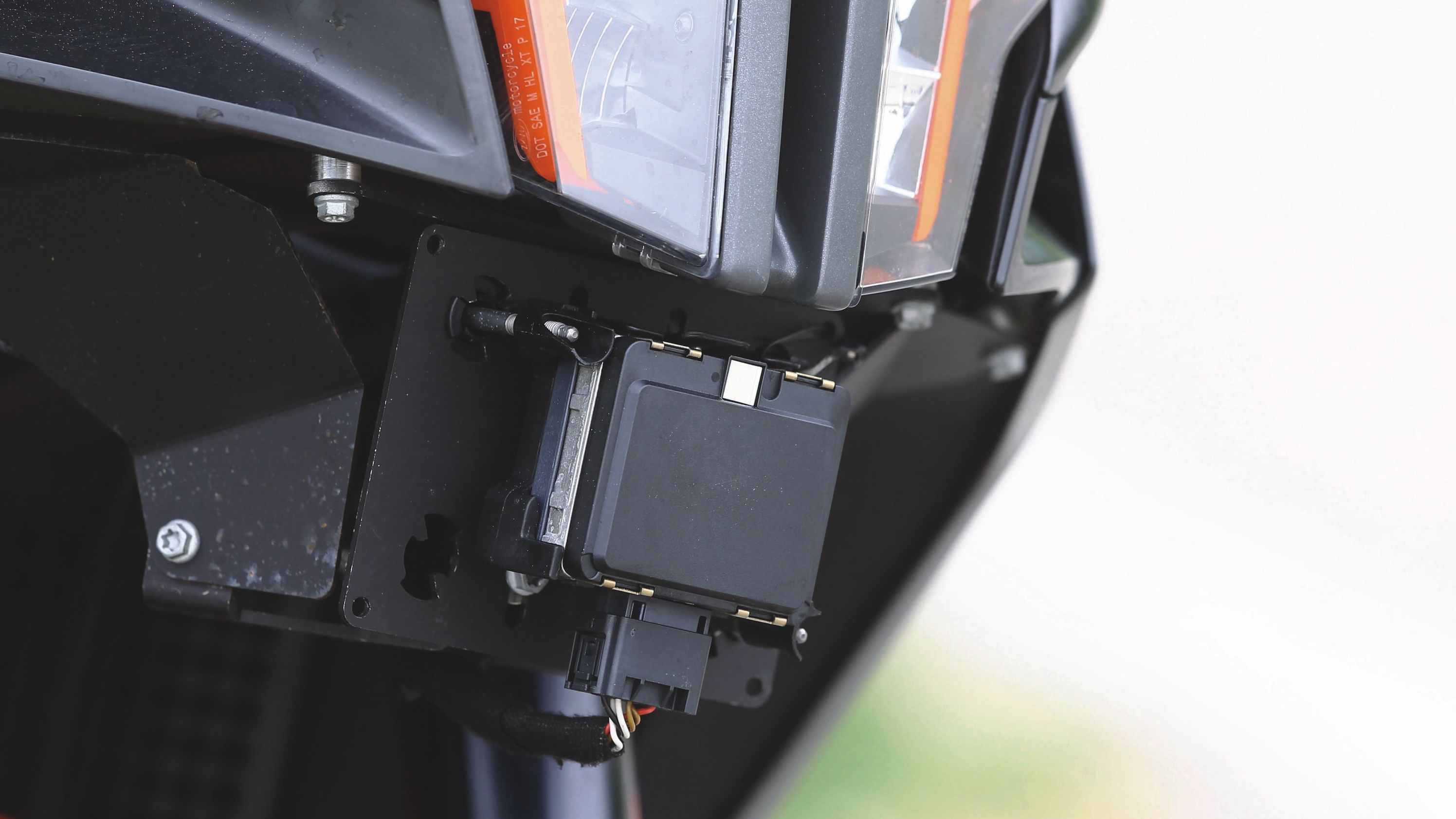Though still in development, KTM revealed its newest safety innovations in the form of Adaptive Cruise Control and Blind Spot Detection. The prototype systems installed on a 1290 Super Adventure S were demonstrated in Austria with the hopes of taking motorcycle safety to the next level.
Continue reading for more on KTM's newest safety technologies.
KTM Is Already A Technology Leader
KTM is no slouch when it comes to electronic yummy-goodness. KTM already has a barrage of wizardry on nearly all their 2018 street lineup with rider safety in mind as well as making the trip even more enjoyable. The new 790 Duke and all the 1290 models feature the new lean angle-sensitive systems, which include KTM's alphabet-soup of technology acronyms: Motorcycle Stability Control (MSC) with the revolutionary cornering ABS function, along with Motor Slip Regulation (MSR) and multi-stage traction control. Some models also include semi-active suspension along with Hill Hold Control (HHC), Automatic Turn Indicator Reset (ATIR), Quickshifter+ and cornering LED headlights. In 2020 for the 2021 model year, add Adaptive Cruise Control (ACC) and Blind Spot Detection (BSD) and that soup bowl just gets bigger.
KTM Adaptive Cruise Control
We're seeing cruise control on more and more bikes filtering down from the touring models, but the next step is Adaptive Cruise Control. ACC is not intended as an emergency brake system, but instead detects a vehicle in front and adjusts the cruise control through the throttle or front brake to maintain a specified following distance. Fixed at a two-second distance in the prototype, the goal is to allow the rider to customize operational distance and speed in the final release of the package slated for MY2021.
KTM Blind Spot Detection
No matter what vehicle you're operating, taking your eyes off the road in front to check, double check, and triple check all the blindspots before making a maneuver can be dangerous, but never moreso than on a motorcycle. Blind Spot Detection (BSD) has the job of watching those spots using short distance radar to alert the rider to the potential of an undetected rear collision. The TFT console displays a visual warning and audible alarm, as well as illuminating superbright LEDs in the rearview mirror glass to alert the rider to a vehicle in proximity.
What They're Saying At The Factory
Gerald Matschl, the VP for KTM Research & Development, demonstrated the systems while riding the prototype-outfitted 1290 Super Adventure S. With his right hand and foot well clear of the controls, the bike went through its paces at the ÖAMTC driving technique center in Marchtrenk, Austria.
“As a company, KTM is committed to improving rider safety and also to reduce accidents.” Matschl commented after the demonstration. “We have a lot more development and many thousands of kilometers to test these systems in the real world before we can implement them on series production bikes, but they are coming in the near future and we are sure they will make a difference.”
KTM PR Manager for the Street division, Luke Brackenbury added, “When it comes to KTM applying electronic rider aids to its sport motorcycles, it has always been the same approach to offer features that help riders control their bikes without losing the joy of riding.” Brackenbury went on to say, “Improving safety for motorcyclists is part of our responsibility as a manufacturer and KTM has demonstrated this in the past as the first company to offer two-channel ABS as standard on a 125cc machine with the KTM 125 DUKE in 2014 in the same year as introducing the pioneering cornering-ABS function. With ACC and BSD we hope to make motorcycling safer still.”
What Does It Mean?
Safety? Definitely. Over the next couple of years, technology is going to explode and brings us all sorts of innovations that continue to march down the path of rider safety.
.
References
KTM 1090/1290 Super Adventure
See our review of the KTM 1090/1290 Super Adventure.
KTM 790 Duke
See our review of the KTM 790 Duke.
KTM 125 Duke
See our review of the KTM 125 Duke.




